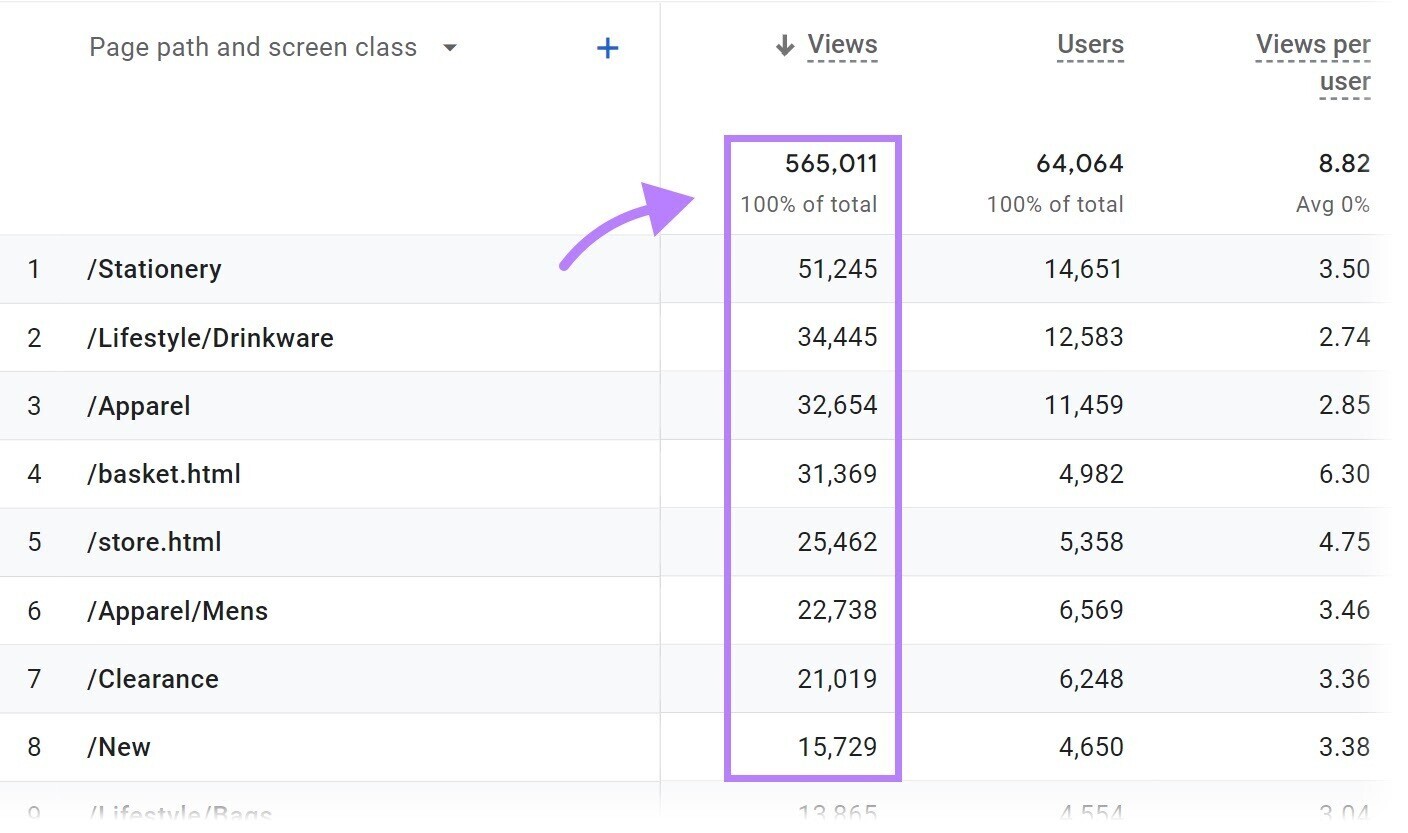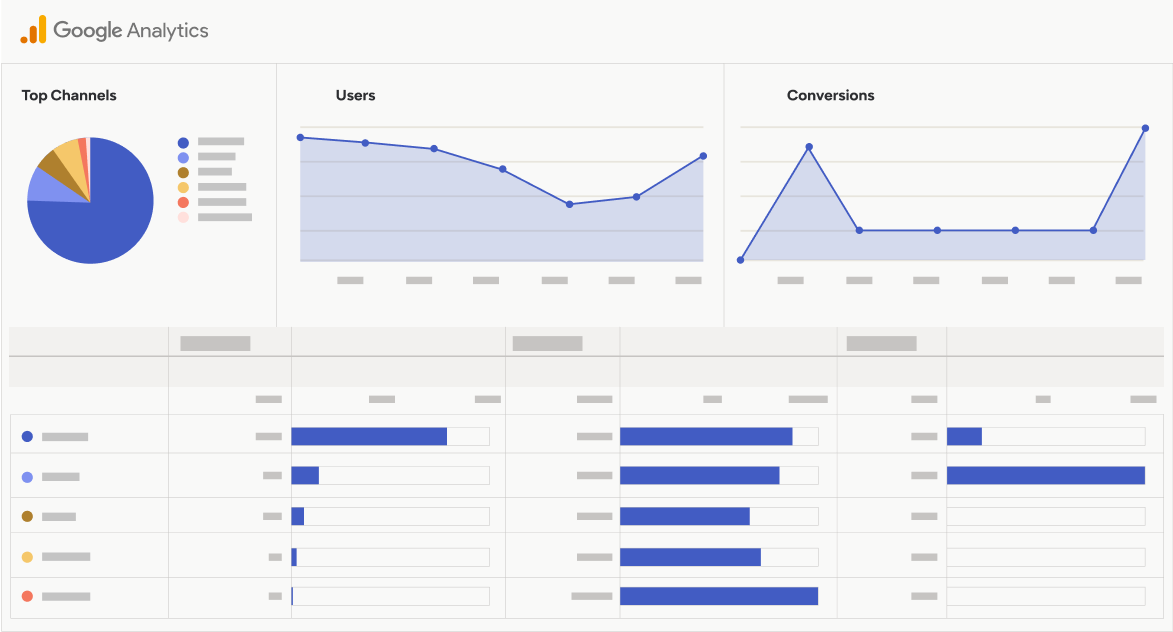When Does the Google Analytics Tracking Code Send an Event Hit to Analytics? A Deep Study Individual Communications
Master Site Insights With Accurate Google Analytics Monitoring Code
The efficient utilization of Google Analytics rests on the exact implementation of its tracking code, a basic action often overlooked by website proprietors. This relatively basic JavaScript bit, when correctly placed, comes to be the foundation of data collection, providing understandings into user behavior and internet site efficiency. However, obstacles can emerge during setup, possibly skewing the data and leading to mistaken decisions. Understanding these details is vital for making best use of the advantages of analytics. What are the common pitfalls that could weaken your tracking initiatives, and how can you make certain accuracy in your strategy?
Comprehending Google Analytics Essentials
Google Analytics is a necessary tool for web site proprietors and marketing professionals, giving indispensable understandings into individual actions and site efficiency. At its core, Google Analytics accumulates data about visitors to an internet site, allowing users to examine metrics such as website traffic sources, individual interaction, and conversion prices. Recognizing these fundamentals is important for maximizing a website's efficiency and improving individual experience.
The system uses cookies to track communications, recording data such as page views, session durations, and bounce rates. This info is accumulated and provided with personalized control panels, making it possible for customers to imagine trends in time. Secret efficiency signs (KPIs) can be checked, such as the complete variety of individuals, new versus returning visitors, and the geographic distribution of the target market.
In Addition, Google Analytics provides division functions, allowing users to isolate particular traffic sources or user demographics for even more targeted evaluation. By grasping these foundational components, website proprietors can make enlightened choices regarding content strategy, marketing projects, and total site improvements. Ultimately, understanding Google Analytics essentials is crucial for leveraging information to drive growth and achieve business purposes successfully.
Setting Up Your Tracking Code

Replicate the given monitoring code and paste it right into the HTML of your web site. Ideally, this code ought to be placed in the header section of every web page you desire to track. This makes certain that the monitoring code lots prior to any kind of various other material, allowing it to capture information precisely. If you are utilizing a content management system (CMS) like WordPress, there are plugins available that streamline the combination process.
After installation, confirm that the monitoring code is operating appropriately by utilizing Google Tag Assistant or the Real-Time records in Google Analytics - when does the google analytics tracking code send an event hit to analytics?. This step is vital to confirm that your information collection is precise and energetic, setting the structure for insightful evaluation
Common Monitoring Code Issues
This may happen when the monitoring code is placed in the wrong area of the internet site's HTML, frequently leading to absent or insufficient information. Additionally, having several circumstances of the monitoring code on a single web page can result in inflated metrics, as customer interactions could be counted much more than when.
An additional concern emerges from using see ad blockers, which can avoid the tracking code from carrying out completely, hence skewing information. when does the google analytics tracking code send an event hit to analytics?. In addition, failing to set up filters appropriately can lead to the exclusion of important web traffic sources or the addition of undesirable reference spam, misshaping the information accumulated
Web site proprietors may also overlook the significance of tracking code updates, specifically when moving to Google Analytics 4 (GA4) from Universal Analytics. Last but not least, not enough screening before launching changes can cause unseen mistakes in the tracking code, further making complex information dependability. Dealing with these common concerns is vital for making sure precise tracking and informative analytics.
Analyzing Site Information Properly
Precise data collection is just the primary step in leveraging Google Analytics; the real worth exists in efficiently analyzing that data to drive enlightened decision-making. To accomplish this, it is vital to identify key efficiency indicators (KPIs) that straighten with your service goals. Emphasis on metrics such as conversion rates, customer engagement, and website traffic sources, as these will certainly supply insights right into user habits and the overall performance of your site.
Making Use Of Google Analytics' segmentation attributes next permits a much deeper understanding of your audience. By damaging down information into details demographics, habits, and website traffic channels, you can reveal trends and patterns that notify targeted strategies. Carrying out custom records and control panels can improve this procedure, enabling quick access to significant data.
Furthermore, regularly assessing data patterns over time assists to recognize anomalies and chances for renovation. Utilize visualization tools to existing information in a quickly absorbable format, assisting in more effective communication with stakeholders. Eventually, the ability to evaluate web site information efficiently empowers companies to make strategic decisions that improve customer experience, maximize marketing efforts, and drive growth.

Ideal Practices for Accurate Tracking
Implementing efficient tracking techniques is important for obtaining trusted information in Google Analytics. To ensure exact tracking, start by properly mounting the Google Analytics tracking code on every page of your internet site. This can be achieved via a tag manager or by straight embedding the code right into the HTML.
Following, configure your Google Analytics account to leave out internal web traffic. This can be done by establishing up filters that identify and get rid of brows through visit this site from your organization's IP address, consequently protecting against skewed data. Furthermore, make use of event tracking to keep track of certain customer interactions, such as downloads or video plays, which common web page sights may neglect.
Consistently audit your tracking configuration to verify that all features, such as objectives and ecommerce tracking, are functioning correctly. Develop a consistent naming convention for your occasions and projects to assist in less complicated coverage and evaluation.
Last but not least, consider leveraging UTM parameters for campaigns to gain insights into the performance of various marketing efforts. By following these best techniques, you can enhance the precision of your information collection and evaluation, inevitably causing even more educated decision-making for your site.
Final Thought
Precise application of the Google Analytics tracking code is vital for grasping site insights. By ensuring the tracking code is appropriately positioned and regularly examined, internet site owners can catch important user communication data, thus facilitating the identification of vital performance indicators. Reliable evaluation of this data, integrated with adherence to best techniques, allows informed decision-making and the optimization of on-line methods. Eventually, a robust monitoring framework boosts the capability to drive engagement and boost general website efficiency.

Inadequate testing before launching adjustments can result in unseen mistakes in the tracking code, further complicating information dependability.Carrying out efficient tracking practices is critical for getting dependable information in Google Analytics. By guaranteeing the monitoring code is appropriately placed and routinely examined, web site owners can capture essential individual interaction information, thus promoting the identification of key efficiency signs.